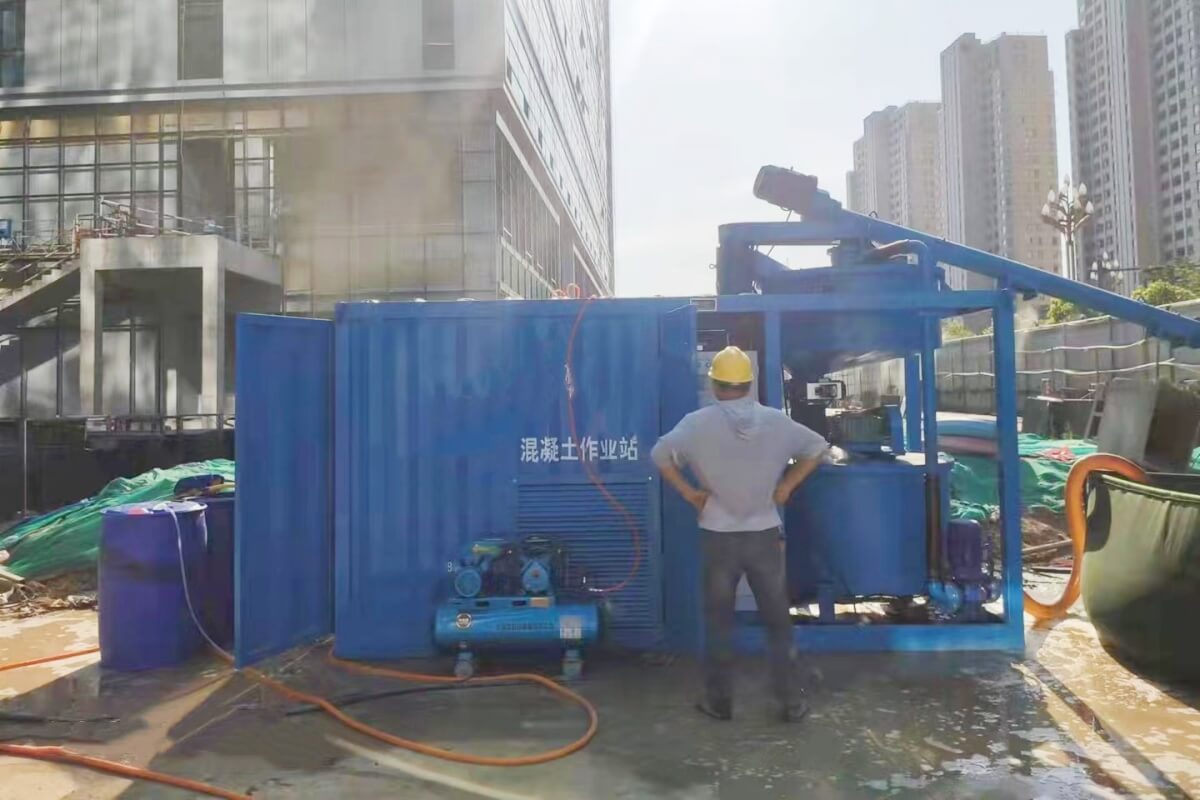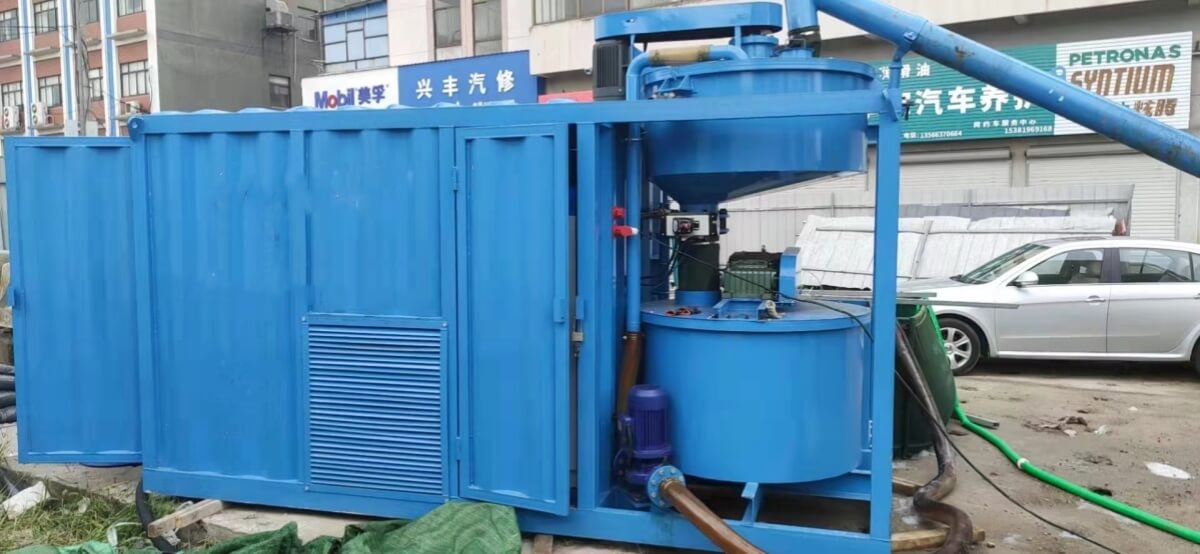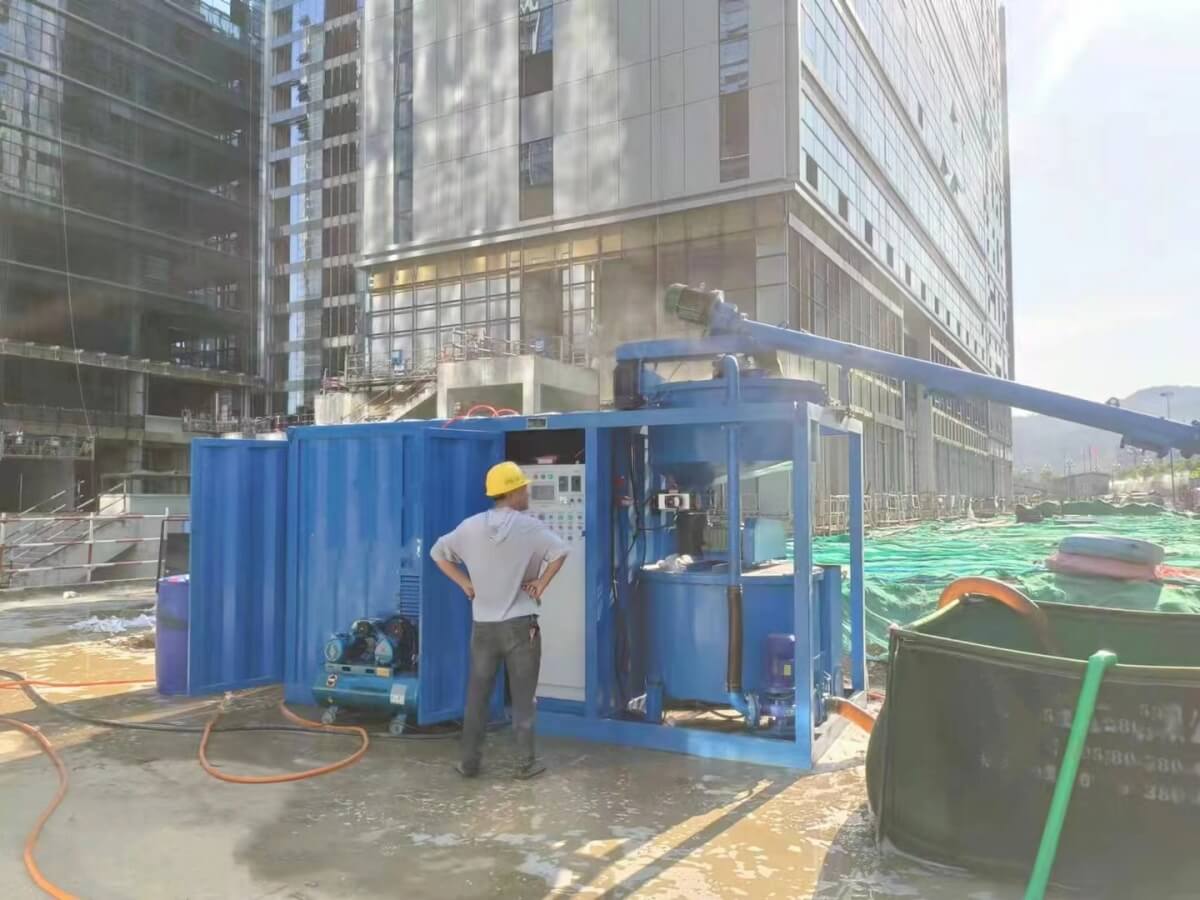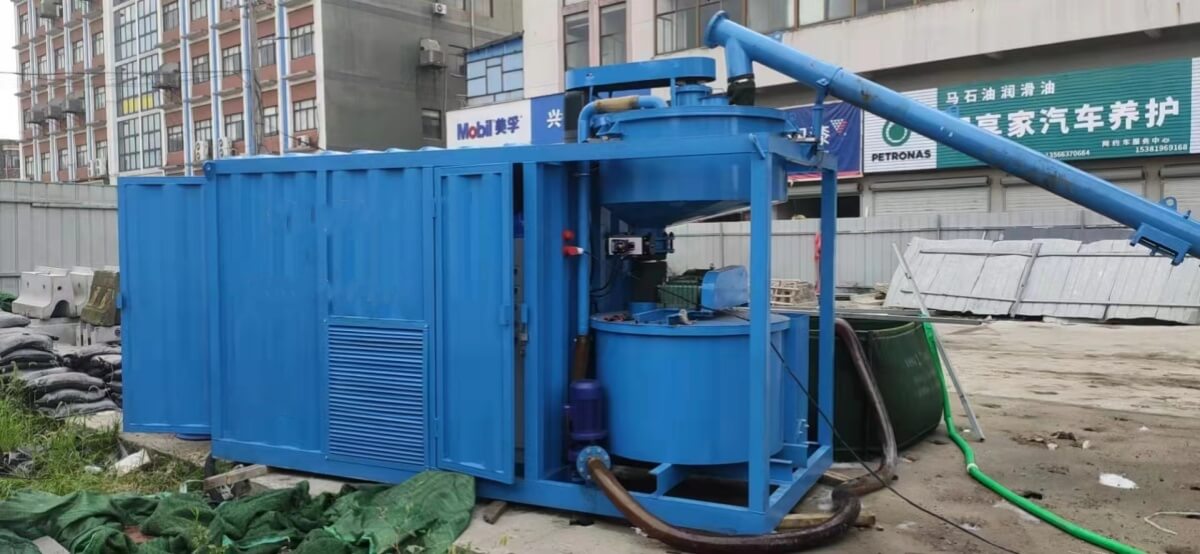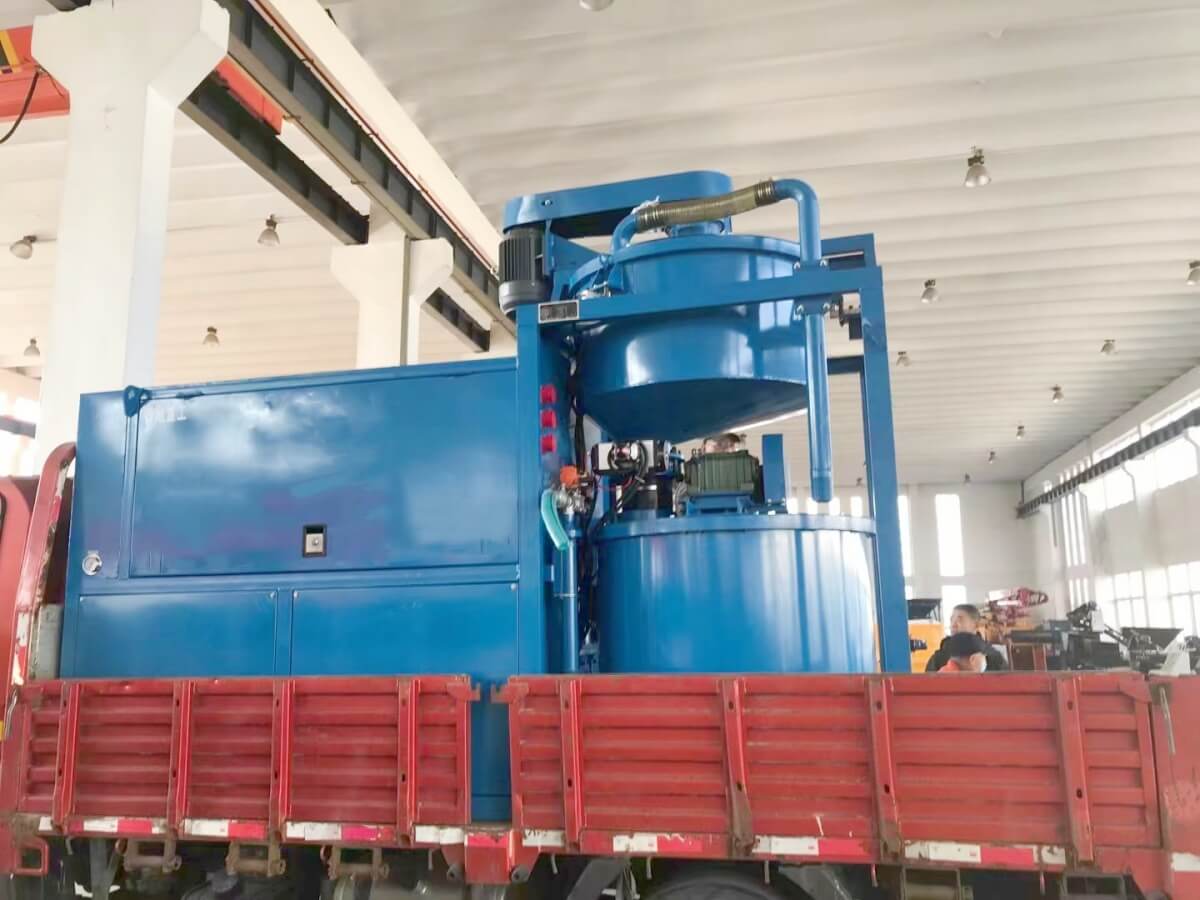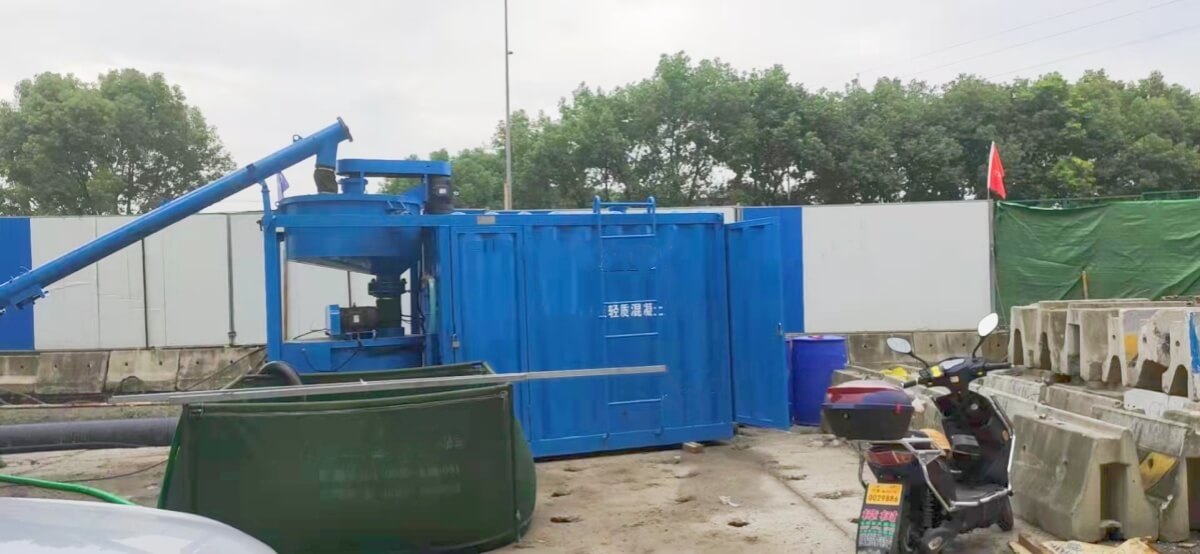Foam concrete plant for building construction
Foam concrete plant applications in building construction: Floor and Roof Insulation: Foam concrete is used as a lightweight filling material for roofs and floors, providing thermal insulation and reducing load. Void Filling: Ideal for filling voids in foundations, retaining walls, and tunnels, ensuring structural stability. Lightweight Walls and Partitions: Used in non-load-bearing walls and interior partitions to reduce weight and improve thermal performance. Bridge Abutments and Embankments: Provides lightweight backfill to minimize lateral pressure on retaining structures. Fire Barriers and Soundproofing: Acts as a fire-resistant and sound-dampening layer in walls and ceilings.
Foam concrete plant for construction is a facility that produces lightweight, thermally insulating building materials. Foam concrete (also known as foamed concrete) is a type of concrete made by mixing a foaming agent with cement-based materials, sometimes with or without the addition of fine aggregate. This type of concrete is widely used in building components such as walls, floors, roofs, etc. due to its low density and good thermal insulation properties.
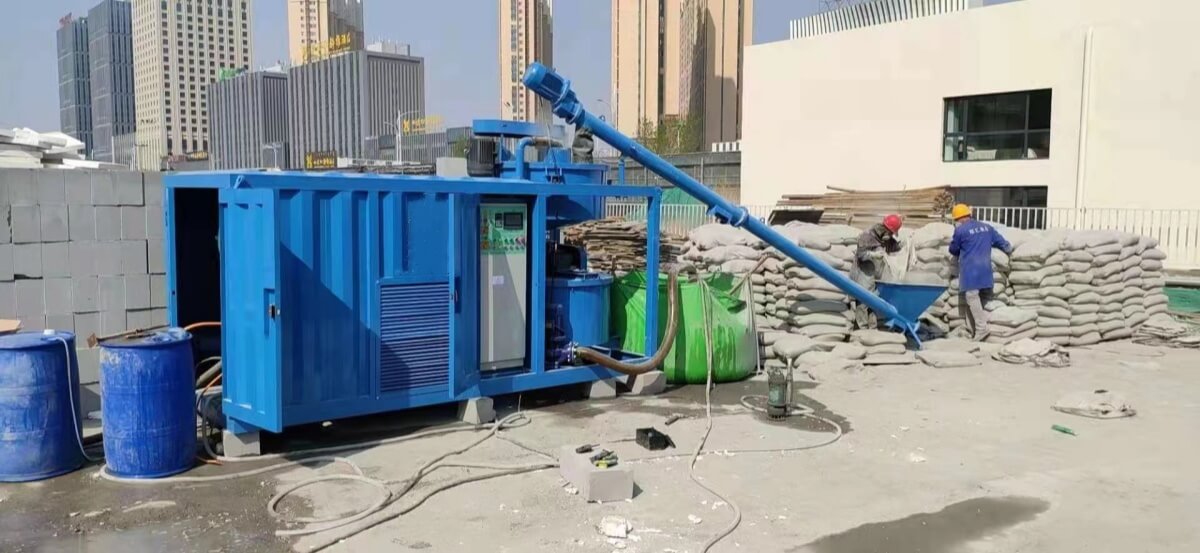
Advantages of foam concrete include:
Lightweight: Compared with traditional concrete, foam concrete has a lower density and is therefore lighter.
Excellent thermal insulation: Foam concrete contains a large number of closed small pores inside, which help reduce heat conduction and improve the energy efficiency of buildings.
Good sound insulation: Also because of the internal pore structure, foam concrete has good sound insulation properties.
Convenient construction: It can be directly pumped for pouring and is suitable for various complex construction environments.
Environmental protection: Some industrial waste materials can be used as raw materials in the production process, such as fly ash, which helps to recycle resources.
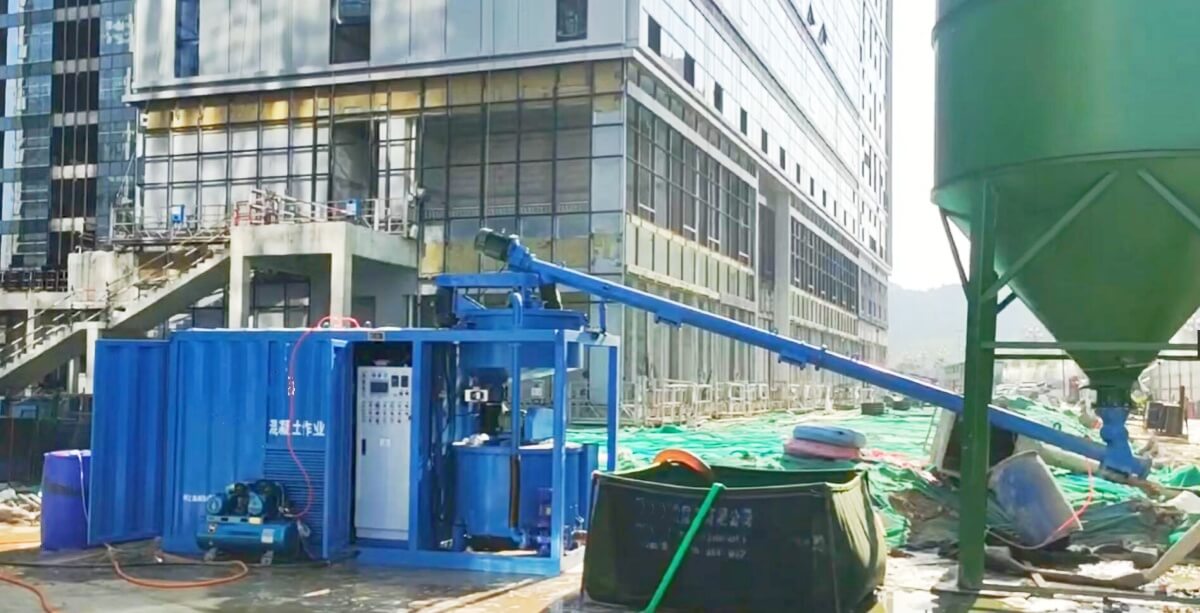
The main components of a foam concrete plant usually include:
Raw material storage system: used to store main raw materials such as cement, sand, and fly ash.
Foam generation system: used to make foam and mix it into concrete.
Mixing system: ensures that all ingredients are evenly mixed.
Conveying system: transports the mixed foam concrete to the required location.
Control system: monitors the entire production process to ensure stable product quality.
With the continuous improvement of energy-saving and environmental protection requirements in the construction industry, the application prospects of foam concrete as a green building material are very broad. If you are interested in our foaming machine, please contact us directly via email: sales1@leadcrete.com

